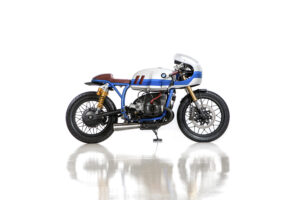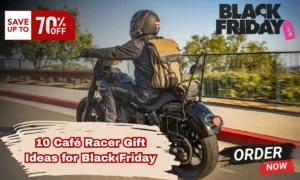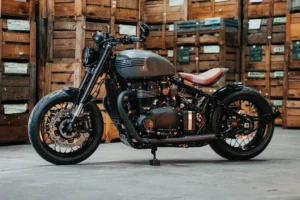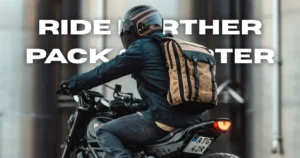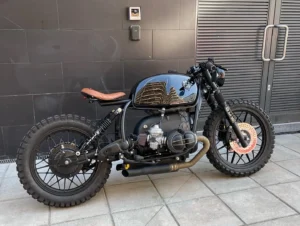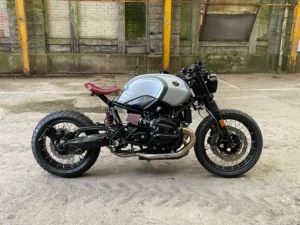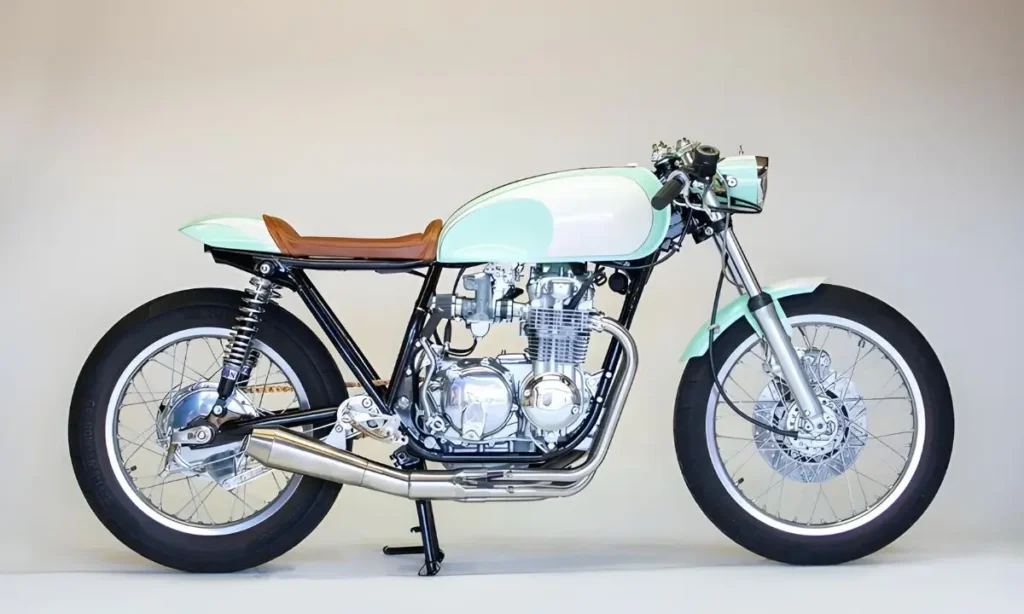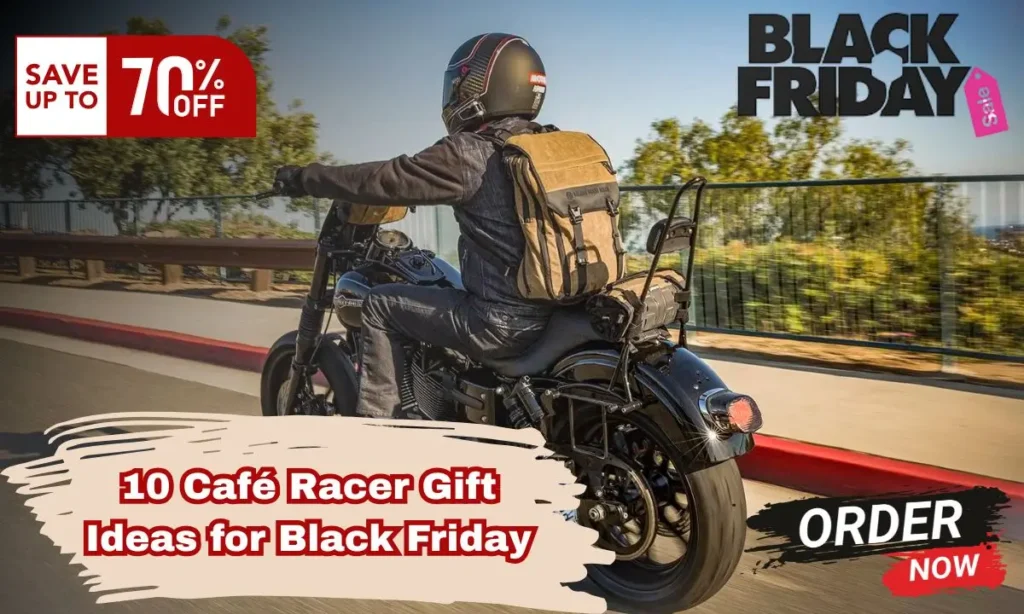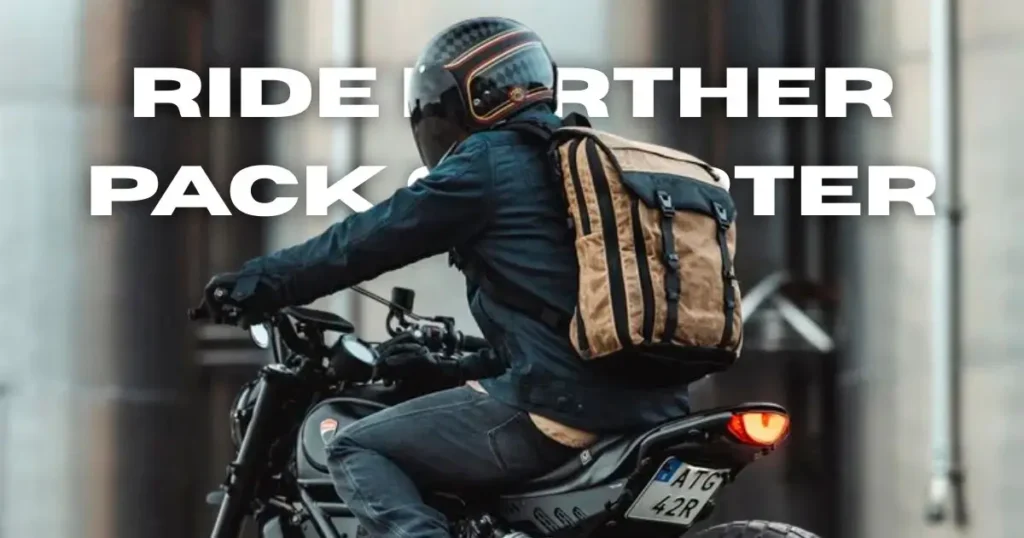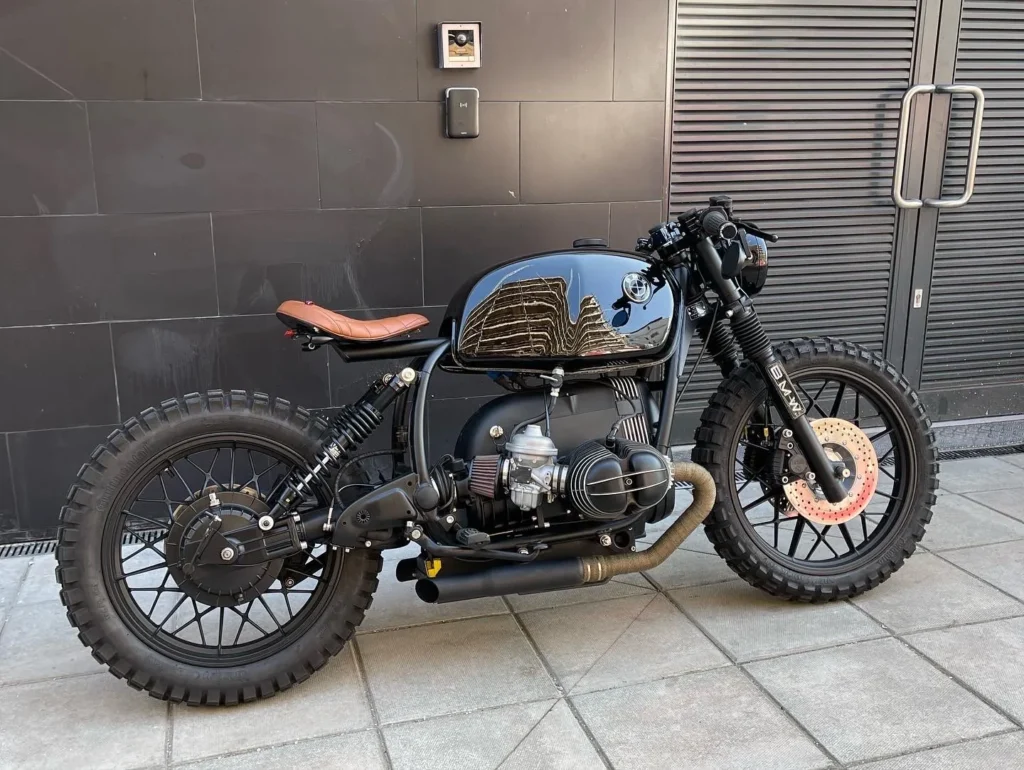Table of Contents
ToggleWhen picking a motorcycle, many styles might catch your eye. Two popular types are Tracker bikes and Café Racers. These bikes have unique looks and offer different riding experiences. If you’re new to this, you might wonder: What’s the difference? Which one should you choose?
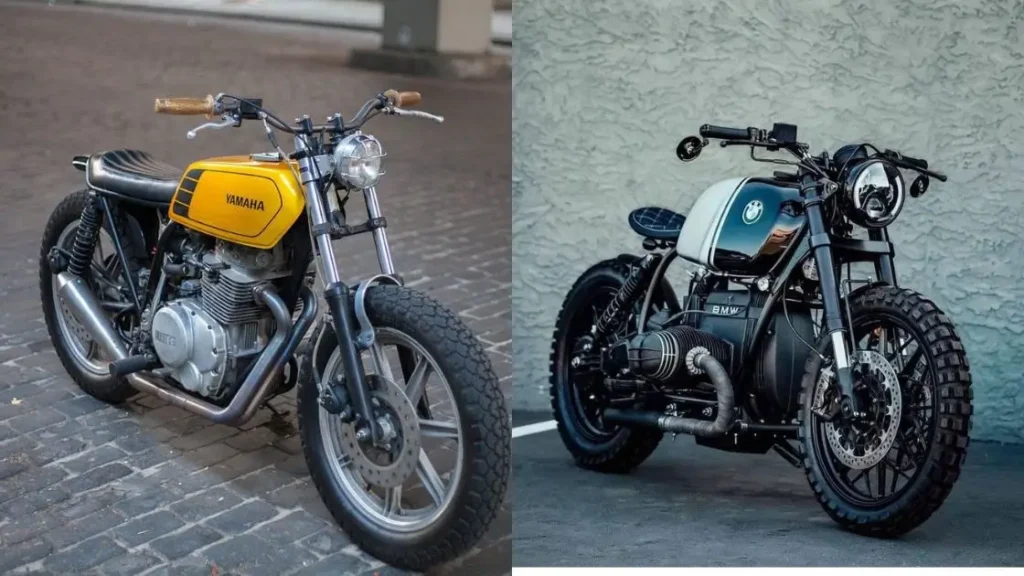
This guide will explain Tracker motorcycles and Café Racers in simple terms. We’ll talk about their history, design, and performance. You’ll also learn about the types of rides each bike is best for. Whether you are a casual rider, a motorcycle fan, or someone who wants to build their dream bike, this article will help you decide.
By the end, you’ll know which bike fits your style and needs. Let’s get started and find out what makes these bikes special.
Exploring Motorcycle Styles: Tracker vs Café Racer
Picking the right motorcycle is a big choice. Before talking about specific models, let’s first understand the differences between Tracker bikes and Café Racers.
What Is a Tracker Motorcycle?

A Tracker motorcycle is made for speed and control on dirt tracks. These bikes started in flat track racing. They have a strong, lightweight frame and a simple, stripped-down design. This style gives Trackers a rugged, raw look.
Trackers have wide handlebars and tall seats. This setup makes them easy to control, even on rough surfaces. The tires are thick, which helps with grip on dirt and gravel. Trackers are known for their speed, agility, and unpolished appearance.
Main Features of Tracker Motorcycles:
- Wide, flat handlebars for better control.
- Simple design with few extra parts.
- Thick tires for rough and mixed surfaces.
- Raised suspension for a smooth ride on uneven tracks.
- Loud exhaust pipes for a classic racing sound.
What Is a Café Racer Motorcycle?
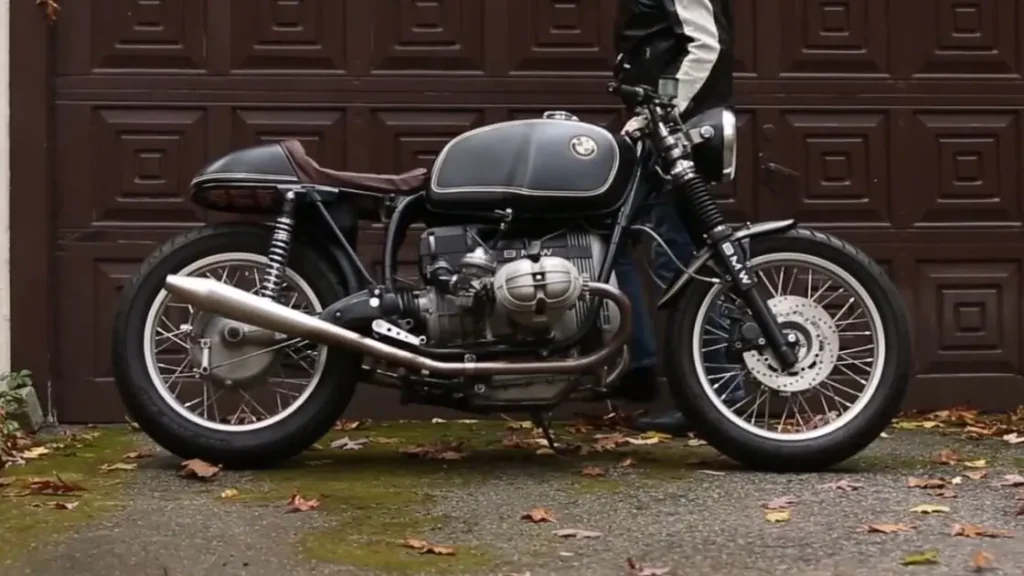
A Café Racer is built for style and speed on the road. The look of a Café Racer is sleek and aggressive. These bikes became popular in the 1960s among young riders in the UK. They wanted fast bikes to ride quickly from one café to another. That’s where the name comes from.
Café Racers have low handlebars and a tucked-in seat. This design makes the rider lean forward. It helps cut through the wind and go faster. The style focuses on a vintage, classic look, inspired by old race bikes.
Main Features of Café Racer Motorcycles:
- Low, narrow handlebars for a streamlined riding position.
- Slim, lightweight body for better speed.
- Simple, vintage design.
- Small, rounded seat, often placed lower.
- Iconic teardrop-shaped fuel tank.
Key Differences in Style
Tracker and Café Racer motorcycles both have a strong appeal, but they are different. Trackers are rough and ready for off-road speed. They look like racing bikes seen on dirt tracks. Café Racers, on the other hand, are stylish and sleek. They have a vintage road-racing feel.
In simple terms:
- Tracker motorcycles are for those who want a tough, no-frills ride.
- Café Racers are for those who love a stylish, classic bike that stands out on the street.
Now that you know what these bikes are, we can look at their history and see how each style came to be.
The History of Tracker and Café Racer Motorcycles
To understand why Tracker and Café Racer motorcycles are popular, we need to look at their origins. Both styles have a strong history in motorcycle culture.
The History of Tracker Motorcycles
Tracker motorcycles started in flat track racing. In the early 1900s, racing on dirt tracks became a popular sport. Riders needed fast, lightweight bikes that could handle sharp turns on rough dirt. This need shaped the design of the Tracker.
Flat track racing first took place in the United States in the 1920s and 1930s. Riders raced on oval dirt tracks, sliding through corners at high speeds. To win, the bikes needed strong engines, good grip, and a simple, tough frame.
Over the years, the Tracker style became iconic. Today, you can still see its influence in modern flat track racing and off-road bikes. Trackers are built for speed, control, and a rugged, race-ready look.
The History of Café Racer Motorcycles
Café Racer motorcycles have a different story. They became popular in Britain during the 1960s. Young riders wanted bikes that looked fast and stylish, like the race bikes of the time. These riders would meet at cafés and race each other from one spot to another. That’s why they called them Café Racers.
The riders customized their bikes, removing heavy parts and adding low handlebars. The goal was to make the bikes lean, lightweight, and fast for city streets. The Rockers, a group of young motorcycle fans, embraced this style. It became a symbol of rebellion, speed, and freedom.
Today, the classic Café Racer look—low profile, teardrop tank, and slim frame—still attracts motorcycle enthusiasts. It blends vintage charm with the excitement of racing.
Comparing Their Origins
Both Tracker and Café Racer motorcycles were created for speed and performance, but their roots are very different:
- Trackers were made for dirt tracks, focused on off-road racing and control.
- Café Racers were made for city streets, focused on road racing and style.
These different origins explain why the two styles look so unique. Trackers are rough and ready for dirt. Café Racers are sleek and designed for speed on the road.
Now that we know where these bikes came from, let’s explore the design and style of each in the next part.
Design of Tracker and Café Racer Motorcycles

A motorcycle’s design is what grabs a rider’s attention first. Tracker and Café Racer bikes each have a look that shows their purpose and history. Let’s look at what makes them different.
Design of Tracker Motorcycles
Tracker motorcycles are built for racing on dirt tracks. Their design is simple, but each part serves a purpose. Here’s what makes a Tracker unique:
- Wide Handlebars: The handlebars are wide and flat. This shape gives the rider more control, especially on rough tracks. It also allows for a more relaxed riding position.
- High Seat and Suspension: The seat is high, and the suspension is raised. This setup helps the bike handle bumps and jumps without losing balance.
- Thick Tires: Trackers use thick, knobby tires. These tires have strong grip on dirt and gravel. They help the bike stay stable on loose surfaces.
- Minimalist Look: A Tracker has a stripped-down design. It has few body panels and no extra parts. The goal is to keep the bike light and fast.
- High-Mounted Exhaust: The exhaust pipes are mounted high and close to the bike’s body. This keeps them safe from dirt and rocks thrown up by the tires.
Overall, a Tracker motorcycle looks tough and ready for action. The design focuses on speed and control rather than on flashy looks.
Design of Café Racer Motorcycles
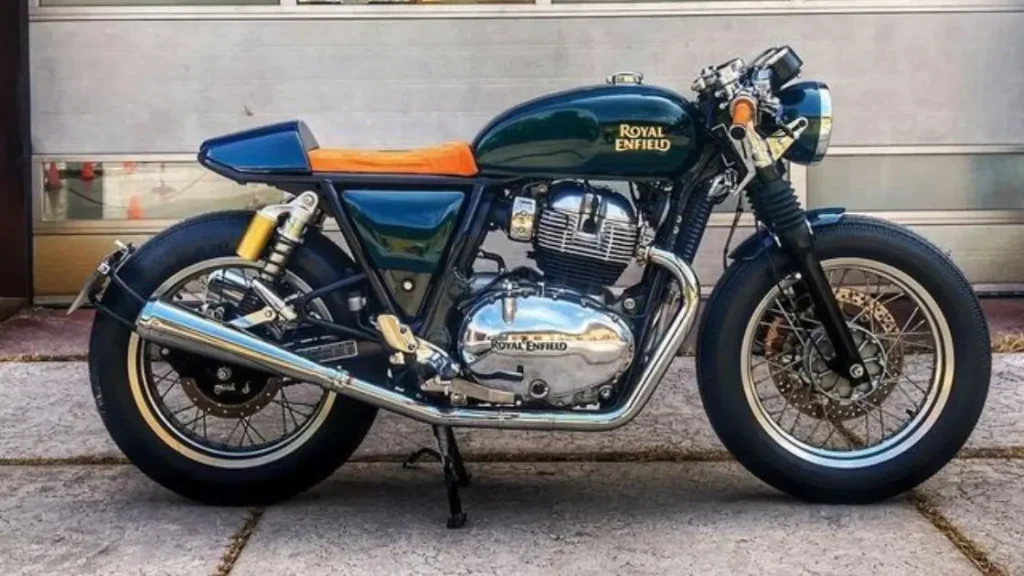
Café Racers have a sleek, classic design that stands out. They are built to be light and fast, with a focus on smooth, streamlined shapes. Here’s what sets a Café Racer apart:
- Low Handlebars: Café Racers have low, narrow handlebars. This puts the rider in a forward-leaning position, which reduces wind resistance and gives the bike a sporty feel.
- Teardrop Fuel Tank: The fuel tank is slim and often has a teardrop shape. This design is stylish and allows the rider to lean forward comfortably.
- Slim Frame: The frame of a Café Racer is narrow and lightweight. The design is simple, with few extra parts, focusing on speed and efficiency.
- Low Seat: The seat is small and sits low. It often has a hump at the back, called a “bum stop,” which keeps the rider in place during quick acceleration.
- Classic Round Headlight: Most Café Racers have a single, round headlight. This gives the bike a vintage look and nods to old racing bikes.
Café Racers are all about style and speed. They have a classic look that appeals to riders who want a bike with a strong personality.
Comparing Tracker and Café Racer Designs
When you see a Tracker and a Café Racer side by side, the differences are easy to spot:
- Trackers look rough and tough, made for dirt tracks. They have high seats, wide handlebars, and thick tires.
- Café Racers look sleek and stylish, built for speed on paved roads. They have low seats, narrow handlebars, and a slim frame.
In simple terms:
- If you want a bike that looks ready for a dirt track, pick a Tracker.
- If you like a bike that looks like a classic race bike, choose a Café Racer.
Now that we’ve covered the design details, let’s see how these bikes perform on the road in the next section.
Performance: Tracker vs. Café Racer
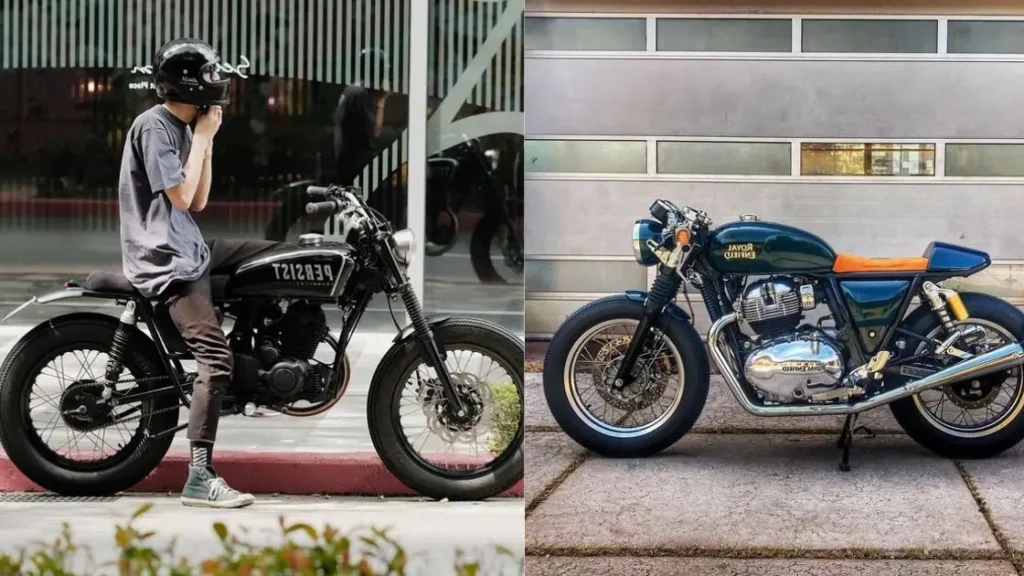
Choosing between a Tracker and a Café Racer is about more than just looks. It’s also about how each bike rides. The design and build give a unique experience for each style.
Performance of Tracker Motorcycles
Trackers are made for off-road and flat track racing. They focus on speed, control, and handling rough surfaces.
- Agile Handling: Trackers are easy to maneuver. The wide handlebars help you steer, especially when making quick turns. This makes them great for dirt tracks and uneven roads.
- Strong Acceleration: Trackers have powerful engines. They can speed up quickly, perfect for short bursts on a track.
- Smooth Ride on Rough Terrain: The suspension is high and built for bumps and jumps. You can ride over gravel, dirt, and small obstacles while staying comfortable and in control.
- Good Traction: Thick, knobby tires give strong grip on loose surfaces. Whether it’s gravel or mud, a Tracker holds its grip and handles well.
Performance of Café Racer Motorcycles
Café Racers are made for speed on city streets and paved roads. They have a sleek design, built for a fast, sporty ride.
- Fast and Lightweight: Café Racers are light with strong engines. This makes them quick. They can reach high speeds fast and handle well on the road.
- Low and Streamlined: The rider leans forward in a low position. This reduces wind resistance and helps the bike go faster. It also makes the ride feel aggressive.
- Sharp Handling: Narrow handlebars make steering easy. You can make quick turns and weave through traffic. This gives you a strong sense of control, especially on smooth roads.
- Stable Ride at High Speed: The slim frame and low seat keep the bike steady. Even at high speeds, the Café Racer stays smooth and balanced.
Comparing Handling and Performance
Let’s compare the two styles based on their strengths:
| Feature | Tracker Motorcycle | Café Racer Motorcycle |
| Best for | Dirt tracks, off-road | City streets, paved roads |
| Handling | Agile on rough surfaces | Precise on smooth roads |
| Riding Position | Upright, relaxed | Low, forward-leaning |
| Tires | Thick, knobby | Slim, road-focused |
| Speed | Quick acceleration | High top speed |
If you want a bike for off-road fun and rough terrain, a Tracker is a better fit. If you prefer fast rides on smooth roads, a Café Racer is the right choice.
Next, we’ll look at what it’s like to ride each type of bike and where they perform best.
Riding Experience: Tracker vs. Café Racer

Now that you know the basics of Tracker and Café Racer motorcycles, let’s talk about what it feels like to ride them. Each bike gives a different experience, so it’s important to choose based on where and how you plan to ride.
Riding a Tracker Motorcycle
Trackers are made for riders who love off-road adventures. They are built for uneven surfaces and tough conditions. Here’s what you can expect:
- Comfortable Upright Position: The wide handlebars and high seat put you in an upright position. This makes it easy to see the road and control the bike, even on rough ground.
- Handles Mixed Surfaces Well: Trackers can handle gravel, dirt, and muddy paths. The thick tires have a strong grip, which helps on slippery surfaces.
- Quick and Agile: Trackers are light and fast. The bike reacts quickly to your moves, making it fun to ride on dirt tracks and winding trails.
- Not Great for Long Rides: One downside is that Trackers are not ideal for long highway trips. The upright position can be tiring, and the knobby tires can be noisy on paved roads.
Best for: Short rides, off-road trails, and rough city streets.
Riding a Café Racer Motorcycle
Café Racers offer a different ride. They are made for speed and style, mostly on smooth roads. Here’s what you can expect:
- Sporty Riding Position: Café Racers have low handlebars that put you in a forward-leaning stance. This gives a sporty feel but can be uncomfortable for beginners or on long rides.
- Smooth on Paved Roads: The slim tires and sleek design are perfect for city streets and highways. Café Racers handle corners well and feel stable at high speeds.
- Built for Speed: Café Racers are lightweight with powerful engines. They can reach high speeds quickly, making them great for fast rides.
- Less Comfort on Bumpy Roads: While Café Racers are great on smooth pavement, they don’t do well on rough roads. The low suspension can make the ride feel stiff, and the seating position may become uncomfortable after a while.
Best for: Fast city rides, weekend cruises, and short road trips.
Choosing Based on Your Riding Style
Your choice depends on what kind of ride you want:
- If you love off-road adventures and need a bike that handles well on mixed surfaces, go with a Tracker.
- If you prefer fast rides on smooth roads and like a vintage race feel, a Café Racer is the better pick.
In summary:
- Tracker motorcycles are for riders who value control and agility on rough terrain.
- Café Racers are for riders who want speed and a classic look on smooth roads.
Up next, we’ll explore customization options for both styles. This is where you can make the bike truly your own.
Customizing Your Tracker or Café Racer Motorcycle
One of the best parts of owning a Tracker or Café Racer is customizing it. Both styles attract riders who enjoy making their bike unique. Let’s look at how you can upgrade each type.
Customizing a Tracker Motorcycle
Trackers are built for performance and off-road riding. Many Tracker owners want to improve how their bike handles on rough trails or give it a tougher look. Here are some common upgrades:
- Handlebars: Riders often replace the stock handlebars with wider, flat-track bars. This change improves control and gives the bike an aggressive appearance.
- Exhaust Upgrades: Adding a high-mounted exhaust gives the bike a loud, racing sound. It also helps with ground clearance on rough trails.
- Tires: You can choose different tires based on where you ride. Knobby tires work well for off-road trails. Smoother tires are better for city streets.
- Seat Changes: Some riders prefer a flat, padded seat for comfort on long rides. Others choose a simple, vintage-style seat for a classic look.
- Lighting: Many Tracker fans add a small, bright LED headlight. It looks sleek and helps you see better on dark trails.
Why Customize a Tracker? Customizing a Tracker boosts performance and improves handling on dirt and gravel. It also lets you show off your style and make the bike unique.
Customizing a Café Racer Motorcycle
Café Racers focus on style and speed. Customizing a Café Racer often means making the bike look sleek, vintage, and fast. Here are popular upgrades:
- Clip-On Handlebars: Many riders add clip-on handlebars. These are low and narrow, giving the bike a sporty stance and better aerodynamics.
- Tank Modifications: Swapping the fuel tank for a teardrop-shaped one is common. It gives the bike a classic look and allows the rider to tuck in for a more aerodynamic position.
- Single-Seat Setup: Café Racers often have a solo seat with a hump at the back. This style is inspired by vintage race bikes and gives the bike a streamlined look.
- Custom Paint Job: Many riders choose bold colors or racing stripes for a custom paint job. This is a great way to make the bike stand out.
- Upgraded Exhaust: Café Racers often feature a sleek, low-mounted exhaust. It gives the bike a deep, powerful sound and completes the vintage look.
Why Customize a Café Racer? Customizing a Café Racer is about style. It’s about building a bike that looks like it belongs on a vintage race track. It’s a chance to create a bike that turns heads wherever you ride.
Cost Considerations
Customizing a Tracker or Café Racer can be simple or complex. It depends on your budget and what changes you want to make. Here’s a quick look at typical costs:
- Basic Upgrades: This includes changes like handlebars, tires, and lights. These upgrades usually cost between $100 and $500.
- Mid-Level Customizations: This includes parts like exhaust systems, new seats, and a fresh paint job. The cost ranges from $500 to $2,000.
- Full Custom Builds: This involves major changes like engine work or frame modifications. These projects can cost from $2,000 to $10,000 or more.
Customizing your motorcycle is a personal journey. It’s about building a bike that matches your style and riding needs. Whether you pick a Tracker or a Café Racer, there are endless ways to make it your own.
In the next section We will explore popular models from both styles and discuss the brands known for making these bikes.
Popular Models and Manufacturers
Picking the right bike often starts with choosing a brand and model. Let’s look at some popular options from trusted motorcycle makers. These bikes have the features and styles you need.
Popular Tracker Models
Harley-Davidson Street Rod:
This model is a solid choice for building a Tracker. It has a strong engine and a tough frame. It performs well on city streets and dirt tracks. The wide handlebars and upright seat make it comfortable for off-road rides. It’s also easy to customize with new tires or exhaust systems.
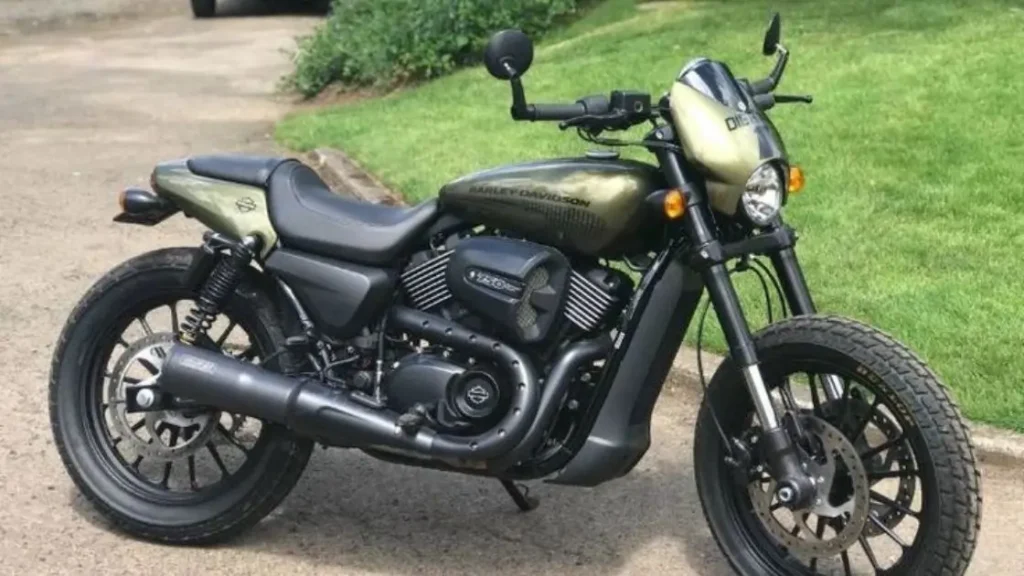
Yamaha SR400:
The SR400 is light and simple, great for a Tracker build. It has a classic look with a reliable engine. This bike is known for its durability. It’s a favorite for those who want a vintage style with modern performance.

Ducati Scrambler:
The Ducati Scrambler is versatile and works well on both streets and off-road trails. It feels sporty and has a rugged design. The bike comes with thick tires and a high-mounted exhaust, common in Tracker builds. It’s a good pick for riding on various surfaces.

Triumph Street Twin:
This bike has a strong, classic look. It’s perfect for building a custom Tracker. The engine is powerful, and the handling is smooth. Riders love the Triumph for its balance and style. It’s reliable and easy to ride on both dirt and pavement.

Popular Café Racer Models
Royal Enfield Continental GT:
The Continental GT is a true Café Racer with a classic look. It features low handlebars and a narrow frame. This bike is built for speed on smooth roads. It’s lightweight and has an aggressive stance.

Honda CB750:
The CB750 is a legend in the Café Racer world. It’s famous for its powerful engine and sturdy frame. This bike is a top choice for custom builds. Its frame is easy to modify, making it great for creating a unique look.
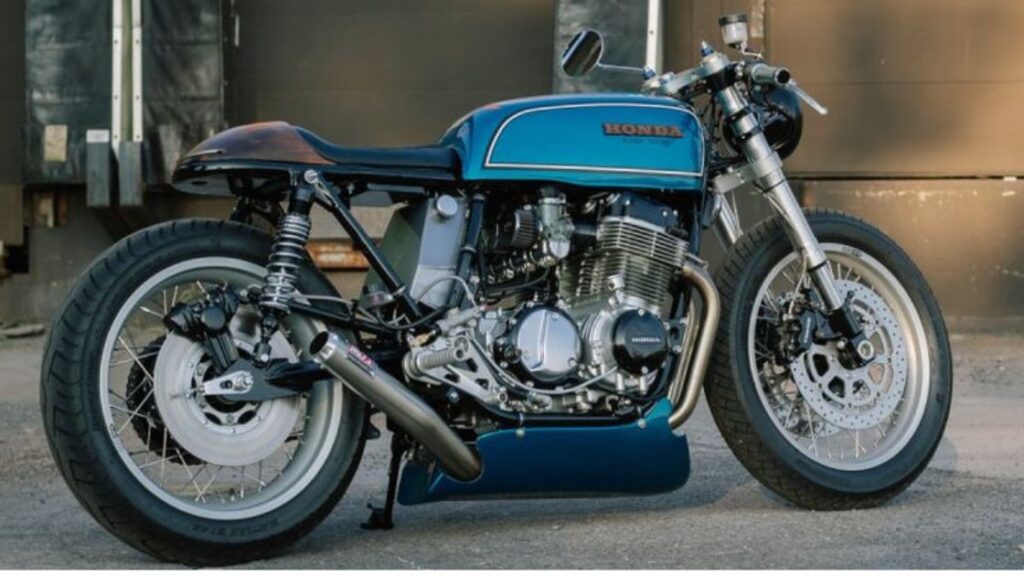
Triumph Thruxton:
The Thruxton has a vintage race bike feel. It’s sleek and stylish with a strong engine. This model has low handlebars and a single seat. It’s built for speed and looks great on city streets.
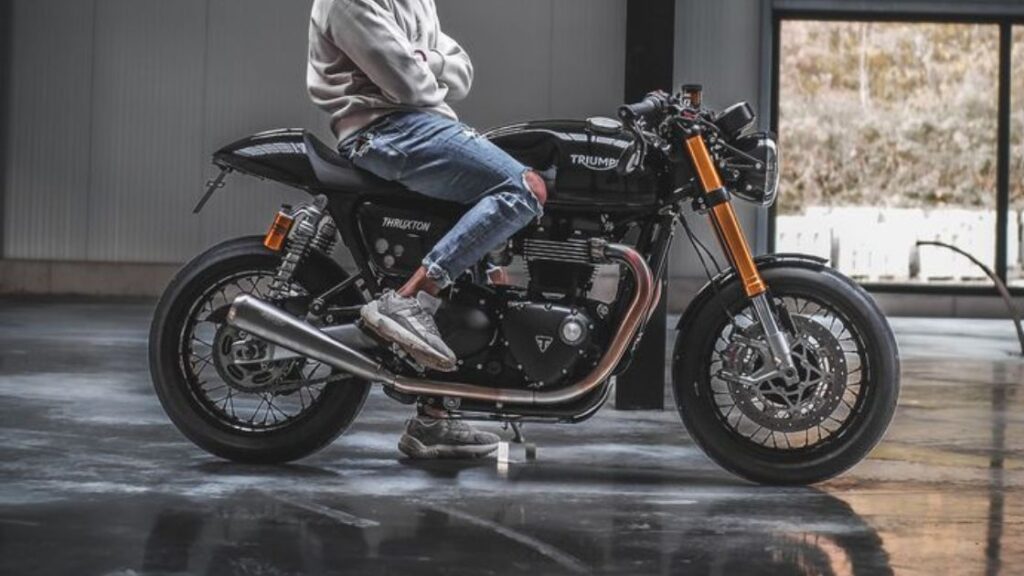
BMW R nineT Racer:
The R nineT Racer blends modern features with a classic Café Racer look. It has a low, aggressive riding position and a powerful engine. It’s perfect for riders who want a mix of old-school style and new technology.
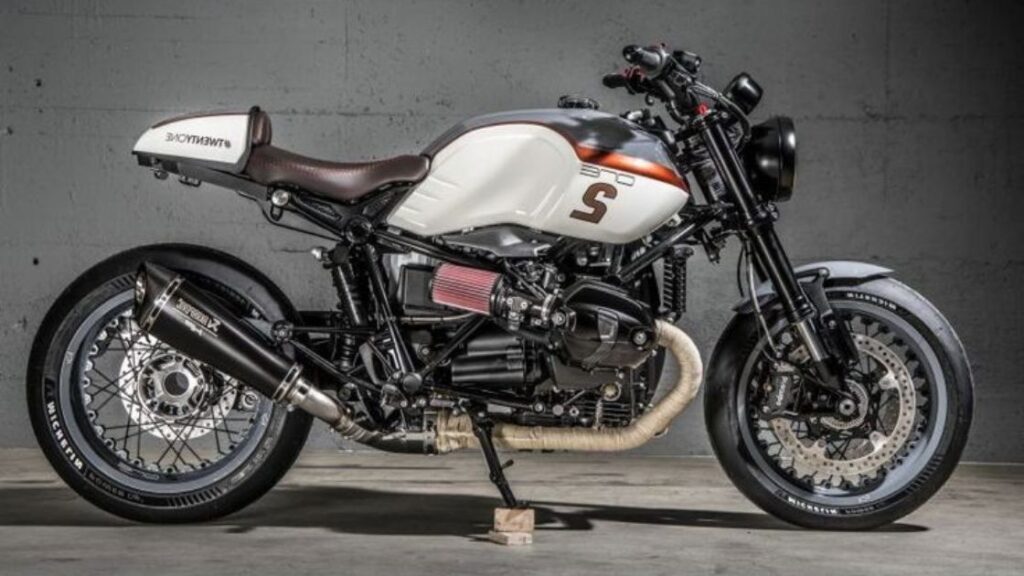
Best Brands for Tracker and Café Racer Bikes
- Harley-Davidson: Known for strong, durable bikes. Great for custom Tracker builds.
- Triumph: Offers both Tracker and Café Racer models. Famous for classic style and quality.
- Royal Enfield: Popular for Café Racers. It has a vintage look and reliable performance.
- Yamaha and Honda: Known for dependable, versatile bikes. Good options for both styles.
- BMW: Known for its classic Café Racer builds. The BMW R-series (R65, R80, and R100) are popular choices, featuring a durable Boxer engine. The BMW K-series, like the K100 and K75, are also favored for Café Racer projects. They have a unique look, powerful engine, and are easy to customize for a sleek, retro style.
Each model has its own strengths. Whether you prefer the rugged feel of a Tracker or the sleek speed of a Café Racer, there is a bike for you. In the next section, we’ll compare the pros and cons of each style.
Pros and Cons
Both Tracker and Café Racer motorcycles have their strengths and weaknesses. Understanding these can help you decide which bike is better for your needs and riding style.
Pros and Cons of Tracker Motorcycles
Pros:
- Great for Off-Road Riding: Trackers handle well on dirt, gravel, and uneven roads. The thick tires and strong suspension make them ideal for rough surfaces.
- Easy to Customize: Trackers have a simple, open design. It’s easy to add new parts or make changes to suit your style and needs.
- Comfortable Upright Position: The riding position is relaxed and upright. This makes it easier on your back and gives you better visibility on the road.
- Rugged and Durable: Trackers are tough bikes. They can handle rough rides and are built to last.
Cons:
- Not Great for Long Rides: The upright position can get tiring on long highway trips. It’s best suited for short rides or off-road adventures.
- Loud and Noisy: Trackers often have loud exhaust systems. While this can be exciting for some, it might be annoying for others, especially in city traffic.
- Less Aerodynamic: The wide handlebars and high seat make the bike less streamlined. It’s not built for high-speed road racing.
Pros and Cons of Café Racer Motorcycles
Pros:
- Sleek and Stylish Look: Café Racers have a classic, vintage design that turns heads. They are known for their clean, minimalist look.
- Built for Speed: These bikes are lightweight and fast. The low, streamlined design helps reduce wind resistance, making them great for city streets and highways.
- Great for Customization: Café Racers are popular among riders who like to customize. You can easily change the handlebars, seat, and other parts to fit your style.
- Fun to Ride on Smooth Roads: The sporty riding position and responsive handling make it a joy to ride on smooth, paved roads.
Cons:
- Uncomfortable for Long Rides: The forward-leaning position can be hard on your back and wrists, especially on long trips.
- Not Ideal for Rough Roads: Café Racers have low suspension and slim tires. They don’t handle well on bumpy or uneven roads.
- Limited Passenger Space: Many Café Racers have a small, single-seat design. If you want to carry a passenger, it might not be the best option.
Summary of Pros and Cons
| Feature | Tracker Motorcycle | Café Racer Motorcycle |
| Best Use | Off-road, mixed surfaces | Smooth roads, city streets |
| Comfort | Upright, relaxed position | Sporty, forward-leaning |
| Style | Rugged, simple design | Sleek, vintage look |
| Customization | Easy to modify | Popular for custom builds |
| Speed | Quick on rough terrain | High-speed on paved roads |
| Drawbacks | Loud, less aerodynamic | Uncomfortable on long rides |
If you prefer a bike that can handle dirt roads and off-road trails, the Tracker is your best bet. If you want a stylish, fast bike for city riding, go with the Café Racer.
In the next section, we will discuss how to make your final choice based on your personal preferences and riding goals.
How to Choose Between a Tracker and a Café Racer?
Picking a Tracker or Café Racer can be tricky. Both styles have unique features and give different riding experiences. Let’s look at key points to help you decide.
1. Think About Where You Will Ride
- Off-Road and Rough Surfaces: If you ride on dirt roads, gravel paths, or rough terrain, choose a Tracker. Its thick tires and strong suspension are perfect for these conditions.
- Smooth Roads and City Riding: If you prefer smooth, paved roads, go for a Café Racer. It is built for speed and handles well on city streets and highways.
Ask yourself: Where will I ride most often? Choose a bike that fits your usual environment.
2. Consider Your Comfort
- Tracker Comfort: Trackers have a relaxed, upright position. This is great for visibility and control, especially on rough roads. But it may not be as comfortable for long highway rides.
- Café Racer Comfort: Café Racers have a forward-leaning, sporty position. This stance is great for speed but can be hard on your back and wrists during long rides.
Ask yourself: Do I want a bike that’s easy on my back, or am I okay with a more aggressive stance?
3. Think About the Style
- Rugged Look of a Tracker: If you love a tough, no-frills design, choose a Tracker. It has a raw, stripped-down look that stands out on dirt tracks and city streets.
- Classic Look of a Café Racer: If you want a sleek, vintage style, pick a Café Racer. It has clean lines and a classic look that turns heads.
Ask yourself: Do I prefer a rugged or a refined look for my bike?
4. Look at Customization Options
- Trackers Are Easy to Modify: If you like making custom changes, a Tracker is a great choice. It’s simple to swap parts and make upgrades for better performance and style.
- Café Racers Are Popular for Custom Builds: Café Racers are also great for custom modifications. Many riders add personal touches like clip-on handlebars, custom seats, or new paint jobs.
Ask yourself: Do I want to customize my bike a lot, or do I prefer a ready-to-ride model?
5. Check Your Budget
- Trackers Can Be Budget-Friendly: A Tracker can be an affordable option, depending on the base model and changes you make. You can start with a basic bike and upgrade it over time.
- Café Racers Can Be Expensive: Custom Café Racers can get pricey. High-quality parts and vintage models often cost more.
Ask yourself: What is my budget? Am I willing to spend more on custom parts and upgrades?
Making Your Choice
In simple terms:
- Choose a Tracker if you want a bike that is rugged, versatile, and good on mixed surfaces.
- Choose a Café Racer if you want a bike that is sleek, fast, and stylish on smooth roads.
Test ride both styles if possible. Feeling the bike is the best way to know if it’s right for you. Trust your instincts and pick the one that makes you excited to ride.
Conclusion
Picking a Tracker or a Café Racer depends on your riding style and preferences. Trackers are tough and good for off-road riding. They are best for people who want to ride on different kinds of roads. Café Racers, on the other hand, have a sleek, vintage look. They are made for speed and smooth city roads.
Think about where you will ride most and what style you like. Both bikes can be customized. You can change parts to fit your taste and needs. Knowing the key features of Trackers and Café Racers can help you decide which bike is best for your rides and style.
FAQs
What’s the Difference Between a Tracker and a Café Racer Motorcycle?
Trackers are made for rough roads and off-road trails. They have strong designs, high suspensions, and thick tires. Café Racers are built for speed on city streets. They look sleek and vintage, with low handlebars and a forward-leaning seat.
Which One is Better for City Rides: Tracker or Café Racer?
Café Racers are usually better for city riding because they are quick and easy to handle on smooth roads. But if you have to ride on bumpy or dirt roads, a Tracker might be a better choice.
Can I Customize Both Tracker and Café Racer Motorcycles?
Yes, you can change many parts on both. Riders often adjust handlebars, seats, exhausts, and paint to match their style and needs.
Which Brands Make Good Tracker or Café Racer Motorcycles?
Some brands are known for making these styles:
Trackers: Harley-Davidson, Yamaha, and Ducati make good Tracker models.
Café Racers: Triumph, Royal Enfield, and Honda have popular Café Racer models.
Which is More Comfortable for Long Rides?
Trackers are usually more comfortable for long trips. They let you sit upright, which is easier on your body. Café Racers have a forward-leaning seat, which can be tiring after a while.
Is One Type More Expensive?
The price depends on the brand and changes you make. Café Racers can be pricier, especially if they are vintage or have custom parts. Trackers can be cheaper, especially if you start with a basic model.
Are Trackers or Café Racers Good for Beginners?
Both can be good for new riders. It’s important to pick a bike that isn’t too heavy or fast. Trackers are easier to handle because of their upright seat. Café Racers need a more bent-forward posture. New riders should take a safety class and start with a smaller, easier bike.

